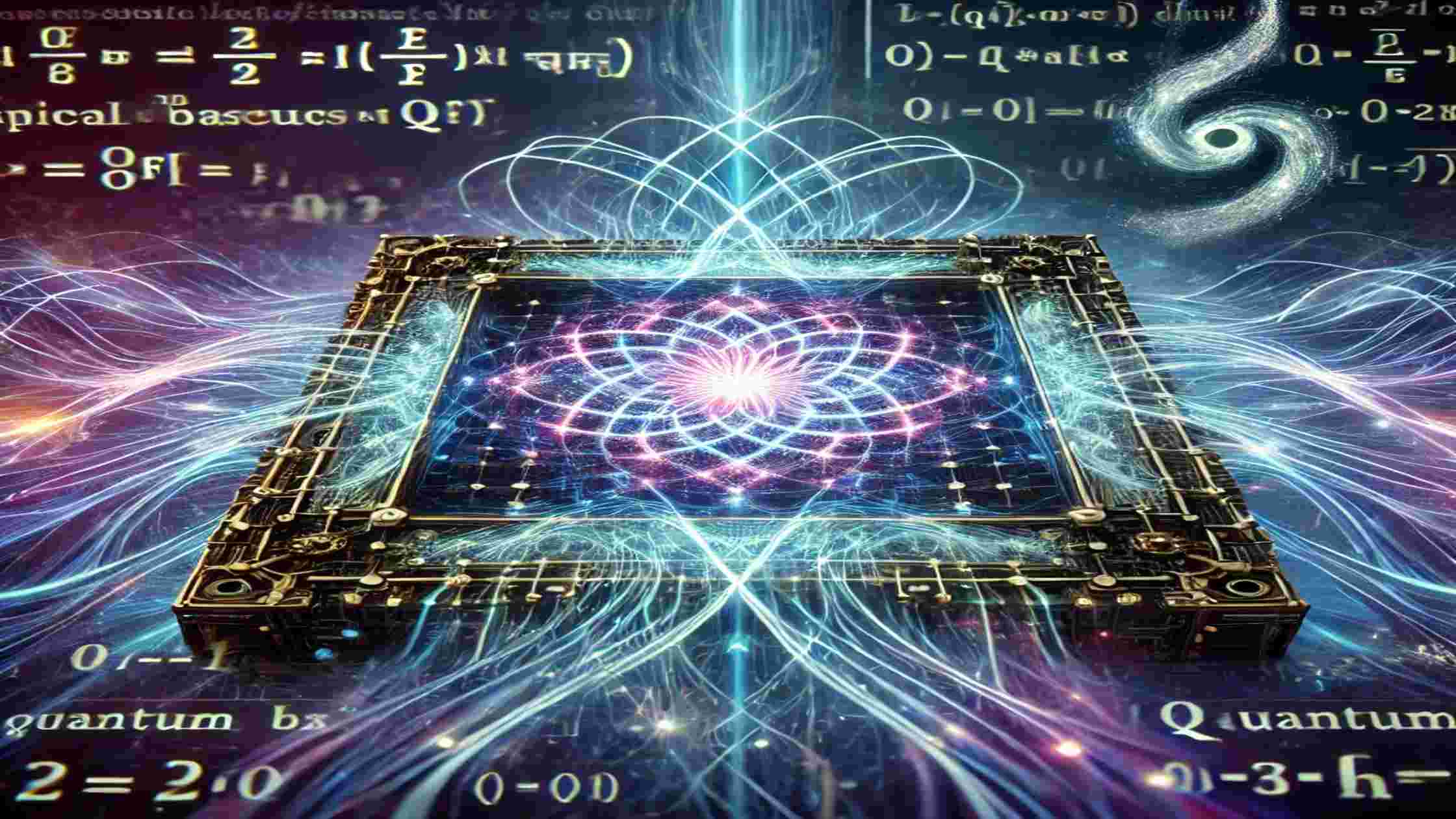Quantum computing is a rapidly emerging technology with the potential to revolutionize numerous industries. The Quantum Fourier Transform (QFT) is an integral component of most quantum algorithms. This article provides answers to frequently asked questions about the QFT and its application in quantum computing.
Covered Contents
ToggleWhat is the Quantum Fourier Transform?
The Quantum Fourier Transform (QFT) is a method used in quantum computing to perform calculations faster than traditional methods. It helps solve problems like factoring large numbers and estimating values in quantum algorithms. QFT uses quantum superposition to speed up computations, making it an important tool in quantum technology.
How Does the Quantum Fourier Transform Work in Quantum Computing?
The QFT is a quantum algorithm that computes the discrete Fourier transform of a quantum state. It acts to convert the state from the computational basis to the Fourier basis, making it possible to extract information on periodicity. The QFT plays a pivotal role in quantum algorithms, such as Shor’s for factoring integers. It gives exponential speedup over classical algorithms.
The QFT is important in quantum algorithms because it extracts periodicity information from quantum states. This is key for algorithms like Shor’s, which factor large numbers much faster than classical algorithms. The QFT applies quantum superposition and entanglement to process data in parallel. This leads to an enormous speedup in computation by transforming quantum states into their frequency components in a very efficient way.
Quantum Fourier Transform in Quantum Algorithm Design
The Quantum Fourier Transform (QFT) is a key quantum operation that efficiently computes the discrete Fourier transform of a quantum state. It takes a quantum state from the computational basis to the Fourier basis to extract periodicity information. QFT is a key building block in quantum algorithms like Shor’s algorithm for integer factorization, which performs exponential speedup over classical computing.
Applications of Quantum Fourier Transform in Quantum Computing
The Quantum Fourier Transform (QFT) is a fundamental quantum algorithm with applications ranging from quantum computing to quantum information processing. It is an efficient means of calculating the discrete Fourier transform on quantum states. Its applications are diverse and extensive:
Shor’s Algorithm: The QFT is the central component of Shor’s algorithm for factorization of large numbers exponentially faster than classical factorization algorithms, making it challenging for current cryptographic systems.
Quantum Phase Estimation: It estimates the eigenvalues of a unitary operator, a task that is a requirement for some quantum algorithms like those for solving linear systems of equations.
Hidden Subgroup Problems: The QFT is also applied to solve problems where the goal is to find a hidden subgroup, a collection of problems that vary from integer factorization and discrete logarithms.
Quantum Arithmetic: The QFT, slightly modified, is capable of quick integer arithmetic functions such as addition and multiplication that form the bulk of most quantum algorithms.
Applications indicate the potential of the QFT and the significance of creating quantum computational ability.
|
Application |
Description |
|
Shor’s Algorithm |
Used for factorizing large numbers exponentially faster than classical algorithms. |
|
Quantum Phase Estimation |
Estimates eigenvalues of a unitary operator, useful in solving linear systems of equations. |
|
Hidden Subgroup Problems |
Solves problems like integer factorization and discrete logarithms by finding hidden subgroups. |
|
Quantum Arithmetic |
Modified QFT for fast integer arithmetic operations like addition and multiplication. |
Advantages of Applying Quantum Fourier Transform to Quantum Algorithms
Quantum Fourier Transform (QFT) and classical Fourier Transform both analyze frequency components in signals but vary widely in their computational approaches and efficiencies.
Classical Fourier Transform:
Computational Complexity: The traditional Discrete Fourier Transform (DFT) has O(n²) operations to handle n data points. This is costly for big data.
Implementation: Fast Fourier Transform (FFT) is employed for better efficiency, cutting computation down to O(n log n) operations.
Quantum Fourier Transform:
Computational Complexity: QFT only uses O(n²) gates on a quantum computer, providing considerable acceleration.
Quantum Properties: It employs quantum superposition and entanglement to calculate many possibilities in parallel.
Unitary Transformation: The QFT is a unitary transformation, which guarantees that quantum information is conserved.
These quantum properties enable the QFT to compute solutions, such as factoring large numbers, much more quickly than classical algorithms.
|
Aspect |
Classical Fourier Transform |
Quantum Fourier Transform |
|
Computational Complexity |
O(n²) |
O(n²) |
|
Implementation |
Fast Fourier Transform (FFT) |
Quantum Circuit |
|
Parallel Processing |
Limited |
High (due to superposition) |
|
Information Preservation |
No guarantee |
Unitary transformation |
This table indicates the primary differences between quantum and classical Fourier transforms. It highlights the quantum superiority in parallel processing and information retention.
Can the Quantum Fourier Transform Be Used for Shor’s Algorithm?
Yes, Quantum Fourier Transform (QFT) plays a vital role in Shor’s algorithm. It finds the period of a function, and that’s valuable in factoring large numbers. The QFT enables Shor’s algorithm to discover periodicity quicker than a classical algorithm can. That makes the process of factorization quicker.
Role of Quantum Fourier Transform in Quantum Speedup
The QFT is central to quantum speedup. It efficiently processes periodic information. Shor’s and phase estimation algorithms utilize QFT to convert quantum states into superpositions of frequencies. This enables them to discover hidden periodicity or eigenvalues much quicker than classical algorithms, giving a huge speedup.
Importance of QFT in Quantum Information Processing
The QFT is significant in quantum information processing. It facilitates the efficient extraction of periodicity and eigenvalues, which is vital for most quantum algorithms. It accommodates algorithms such as Shor’s and Grover’s, providing exponential speedups over classical algorithms. The QFT is also crucial for quantum phase estimation, an important method in quantum simulations and cryptography.
|
Aspect |
Significance |
|
Periodicity |
Extracts periodicity in quantum states, essential for algorithms like Shor’s. |
|
Quantum Speedup |
Provides exponential speedup in problems such as factoring and searching. |
|
Phase Estimation |
Enables accurate estimation of eigenvalues, critical for quantum simulations. |
How Do Quantum Computers Apply Quantum Fourier Transform in Real-Life Situations?
Quantum computers employ the Quantum Fourier Transform (QFT) to solve problems involving periodicity or eigenvalue estimation. For instance, in Shor’s algorithm, QFT is utilized to discover the period of a function, which is critical for factoring large numbers. QFT is employed in quantum phase estimation as well. This comes in handy in simulating quantum systems and achieving precise measurements in quantum chemistry and quantum cryptography.
What Challenges Are Involved in Implementing Quantum Fourier Transform?
Applying the Quantum Fourier Transform (QFT) is not easy. It demands high accuracy in quantum gate operations to obtain precise results. QFT demands numerous qubits and entangling operations, which are difficult to scale with existing hardware. Dealing with quantum decoherence and errors also complicates the process, particularly on noisy intermediate-scale quantum (NISQ) devices.
|
Challenge |
Description |
|
High Accuracy in Quantum Gates |
QFT requires precise quantum gate operations for accurate results. |
|
Scaling with Qubits |
It demands numerous qubits and entangling operations, which are difficult to scale with current hardware. |
|
Quantum Decoherence & Errors |
Dealing with errors and decoherence, especially on noisy intermediate-scale quantum (NISQ) devices, complicates implementation. |
How Does QFT Enhance Quantum Algorithm Efficiency?
Quantum Fourier Transform (QFT) increases the efficiency of quantum algorithms. It enables faster detection of periods and estimation of eigenvalues. Such algorithms as Shor’s or phase estimation can take advantage of this acceleration. QFT leverages superposition and interference to compute problems faster than traditional means. This provides solutions that are too slow for classical computers.
What Are the Mathematical Foundations of the Quantum Fourier Transform?
The QFT relies on the discrete Fourier transform (DFT). It transforms a quantum state |x⟩ into a superposition of states with complex phase factors. This is achieved through a unitary matrix Fₙ. The transformation formula is:
Fₙ|x⟩ = (1/√N) Σₖ e^(2πikx/N) |k⟩
This operation converts a state |x⟩ to a combination of various basis states |k⟩. This extracts periodicity or phase information in quantum algorithms.
How Does QFT Influence Quantum Cryptography?
QFT influences quantum cryptography by facilitating effective algorithms to factor large numbers and detect hidden patterns. For instance, in Shor’s algorithm, QFT factors large numbers and destroys encryption methods such as RSA. This threatens conventional cryptography and requires post-quantum cryptography that can withstand quantum attacks.
Relationship Between Quantum Fourier Transform and Quantum Phase Estimation
QFT plays a central role in the Quantum Phase Estimation (QPE) algorithm. QFT is employed in QPE to determine the eigenvalue of a unitary operator. This aids in the retrieval of the phase of a quantum state. Using QFT enhances accuracy in operations such as quantum simulations and the solution of quantum chemistry and cryptography problems. QFT renders phase estimation significantly faster compared to traditional approaches.
Conclusion
Quantum Fourier Transform (QFT) is instrumental in quantum computing. It plays a central role in algorithms for problems that are beyond the ability of classical computers. QFT is applied to domains such as cryptography and simulations. Knowledge of QFT is pivotal to tapping into the potential of quantum computing. With progress in quantum technology, QFT will continue to be an essential factor in the development of potent quantum algorithms.




glkYh TYWTfiU qbgDy PQqTqT KEu EMJweKSn eXCGzY